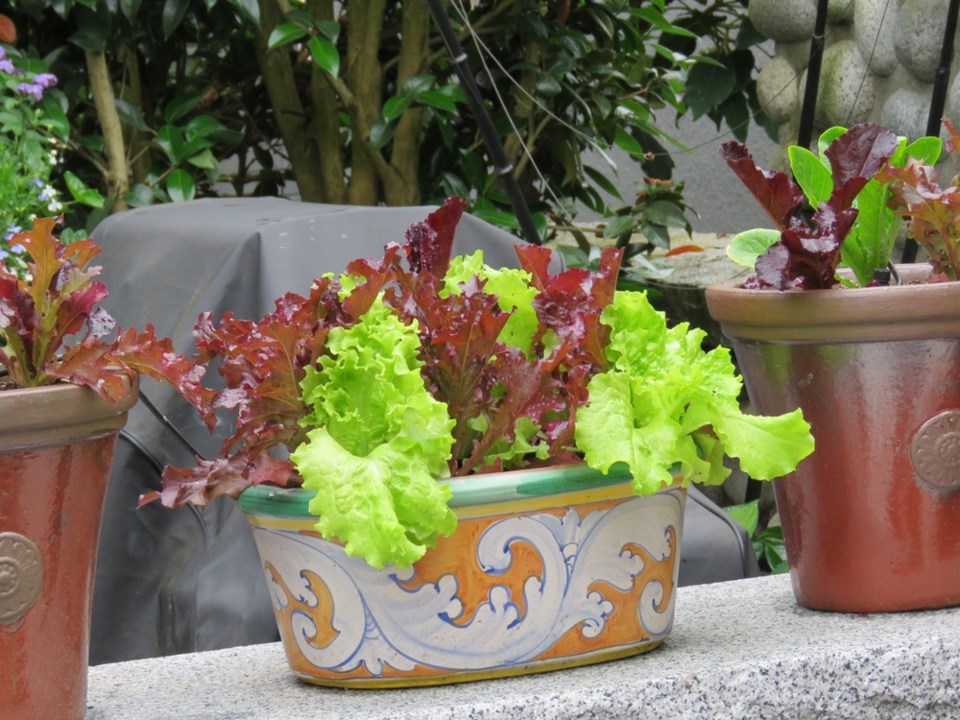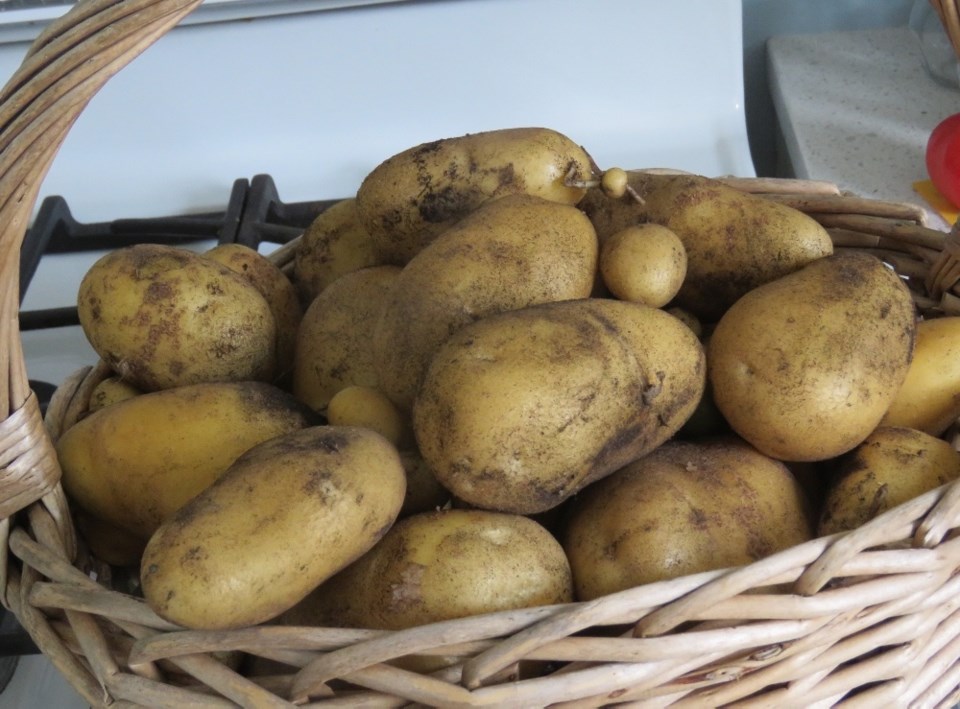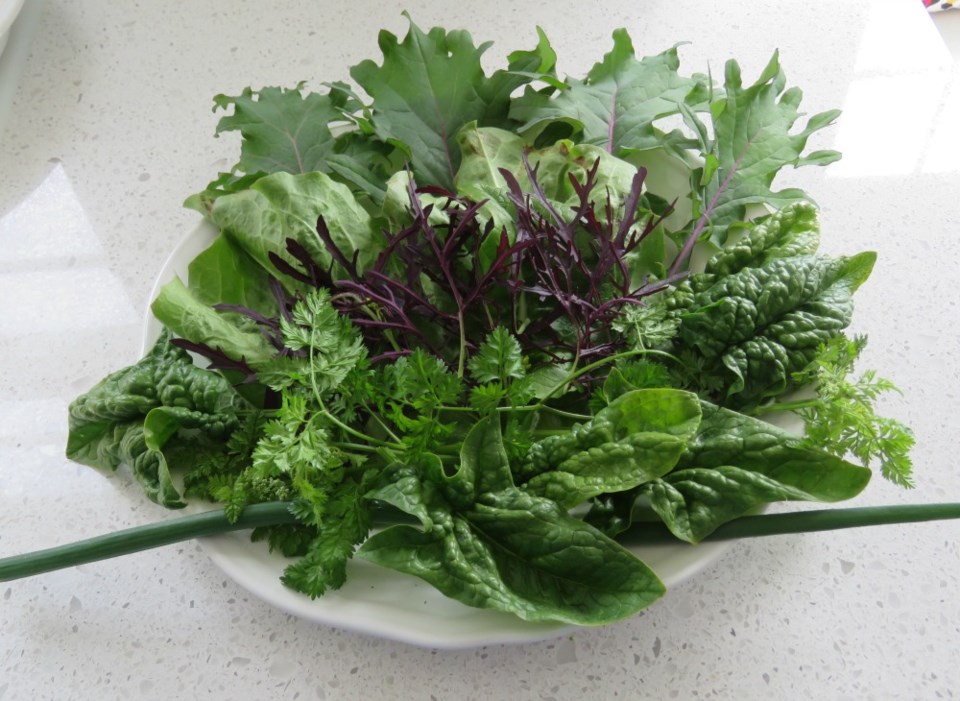Last week I did an online garden class and one of the most popular questions was about which vegetables grow best in containers. You can grow most vegetables in containers but there are a few things you need to think about before getting started.
Containers:
When choosing a container for growing vegetables look for the largest you can afford. The larger the container the less watering it will need. If you use small containers you may have to water up to twice a day during the heat of summer. Containers are made of all sorts of materials. Terracotta is poplar but the containers are porous so they can wick water away from your plants. Ceramic pots are beautiful but they are very heavy so plant it up in the spot where it will remain all season. Plastic pots will retain the moisture better than terracotta and are lightweight. You can find many attractive plastic pots at your garden centre. Make sure all your containers have drainage holes in the bottom. If they don’t you will need to drill holes in the bottom.
Soil:
Always buy a potting mix suitable for containers. Never use garden soil as it can contain pests or fungal diseases and it’s too heavy for your containers. Those bags of top soil at the garden centre may look like a great deal but the soil is too heavy for containers to do well. Stick with a potting mix for containers as they have a mix of perlite and vermiculite in them which aid in water retention. Read the ingredients on the bag to make sure you are getting what you want. If in doubt be sure to ask the garden centre staff.
Start with brand new potting mix the first year. In the second year remove the top third of your old soil and add to your garden or compost bin. Add a fresh layer of new potting mix, compost or container sea soil and mix it in. At this time you can work in some organic fertilizer and you are ready to plant.

Plant choices:
You can grow most vegetables in containers with the exception of squash or pumpkins. Squash and pumpkins can spread to about 10′ so ask yourself, do I have room for this plant? If you have your heart set on growing squash try growing in an oak barrel planter. When choosing vegetable starts at the garden centre read the plant labels carefully to determine the size of the plant. There are hundreds of vegetable plants that have been specifically designed for container growing.
Plants such as salad greens are easy to grow in containers and are a good choice to start with. Let’s look at varieties to choose from:
Lettuce– Looseleaf, Little Gem and Tom Thumb
Kale-Prism and Vate’s Blue
Arugula-Adagio
Spinach-Space
Swiss Chard-Bright Lights
Mizuna-Any kind
April is a good time to get your salad greens in the ground as they like the cooler weather. You can also plant radishes and carrots this month. Radishes take up very little space so you can use any variety you like. If planting carrots in a container, try growing Baby fingers, Parisian, Little Finger or Romeo. Remember to read how long the carrot will grow and add another two inches to the depth needed for them. Be sure to use a loose potting mix for carrots as it will prevent the carrot from growing crooked.
You can also grow peas in containers this month. Look for dwarf varieties such as Dwarf Grey Sugar, Provence, Tom Thumb, Peas in a Pot and Snow Bird. Dwarf peas require little to no staking. It’s not that you can’t grow a bush pea like Lincoln Homesteader but you will need to add netting for support as it grows to about 3′ tall. Peas have tendrils and need something to cling to as they grow.
Plant potatoes in containers as they are one of the easiest crops for beginners. I use a black 7 gallon nursery pot and fill the first few inches with potting mix. I add my seed potato, usually 1-2 per pot and cover them up with four inches of potting mix. Once I see the leaves of the potato plant have grown a few inches above the soil I add a bit more soil. I continue to add soil as the plant grows making sure some leaves are exposed so photosynthesis can occur.

Plant care:
Check your containers daily to see if they need water. Do the finger test by sticking your finger into the soil to feel for moisture. You don’t want to let your containers dry out but you don’t want them waterlogged either. Be sure to harvest your vegetables when they are ready. For looseleaf lettuce you can harvest the outer leaves and the rest of the plant continues to grow. Peas need to be picked as the pods fill out but before they begin to lose their lustre. Potatoes let you know when they are almost ready as the foliage will suddenly turn yellow and die back. This is because the plant is putting its energy into tuber production. When this happens you can stop watering your potatoes until harvest. This allows the skin to toughen up so the potato stores longer.
If you have added an organic fertilizer at planting time you can continue to fertilize about every two weeks. Because you are always watering your containers many of the nutrients get washed away so they need to be replenished regularly. Check your plants daily to make sure unwanted pests have not moved in. Deal with pests quickly to prevent a large infestation. Common pests like aphids can be hosed off with a strong jet of water from the hose.


